Advertisement
Mitch Ryerson Is Carving Out The Future Of Playgrounds
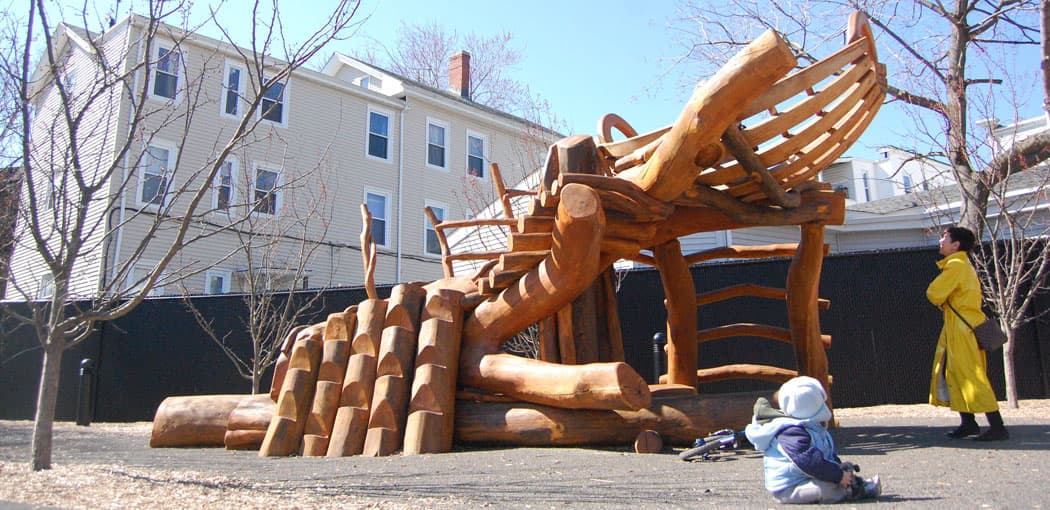
Five years ago, Cambridge woodworker Mitch Ryerson was building benches for the redesigned Kemp Playground on Cambridge Common.
“There were some problems with the wooden [play] structures that they had gotten. And Rob [Steck, a landscape architect for the city of Cambridge,] asked if I could help. So I basically rebuilt some of them,” Ryerson says. “Working in a playground seemed to allow a kind of creative freedom that you don’t have when you’re working for adults.”
The Boston area has become a hotbed for innovation in playground design. And the Kemp Playground—which opened in 2009 with a island adventure theme featuring a dragon-headed sailing ship (Ryerson reconstructed the boat, but didn't carve the head), huts, slides built into hills, climbing ropes and water troughs—is a national landmark of the new art of public play.
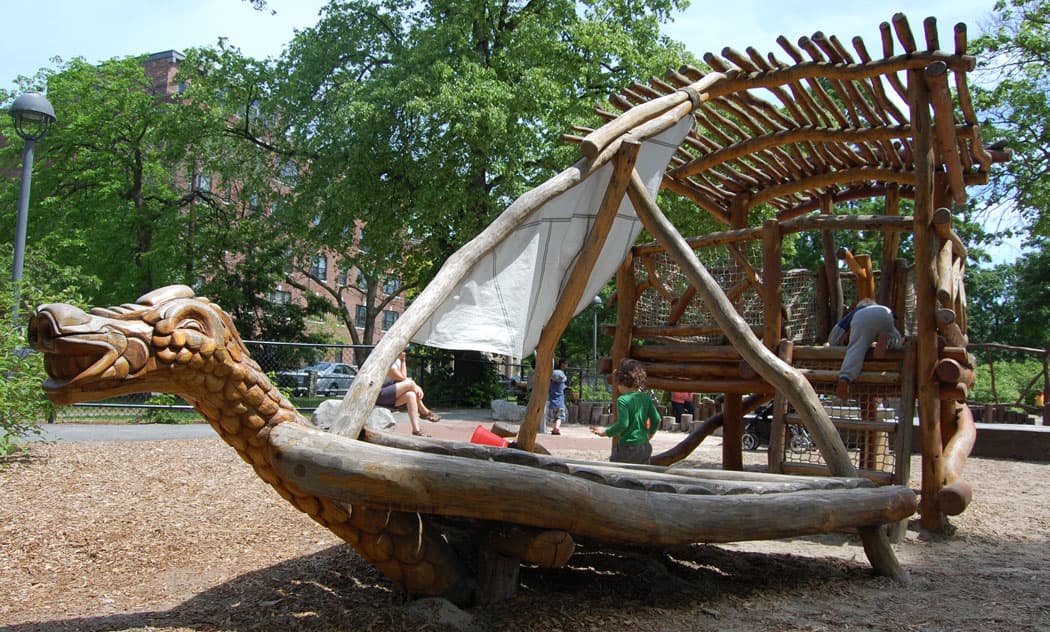
Most playgrounds today are built using interchangeable pre-fab plastic and metal units, the design driven mainly by affordability, increased parental worries and new safety regulations developed in the 1980s and ’90s. This has reduced injuries, but it has also resulted in a sameness in playground design. So over the past couple decades, high-end architects and landscape designers have taken on the challenge of rethinking public play spaces.
Steck is at the forefront of that movement locally. By teaming up with him on the Kemp Playground, Ryerson has become a go-to guy for bringing such new designs to life in custom worked wood.
“I think people are tired of the boring old playgrounds,” Ryerson says. “There’s a lot of research and just a new kind of appreciation that shows just how important it is for kids to explore and take risks and challenge themselves in a way the playgrounds of the ‘80s and ‘90s really did not do. So I think the new playgrounds are trying to address that need for a challenge and more open-ended play.”
Ryerson—along with Eden Dutcher and Kirk Hiatt of the Somerville landscape architecture firm GroundView, which designed Somerville’s Chuckie Harris Park, which opened last summer—will give a free talk “The Future of Playgrounds” at 7 p.m. Tuesday, April 8, at the Malden Public Library. (I’ve organized and will moderate the discussion.)
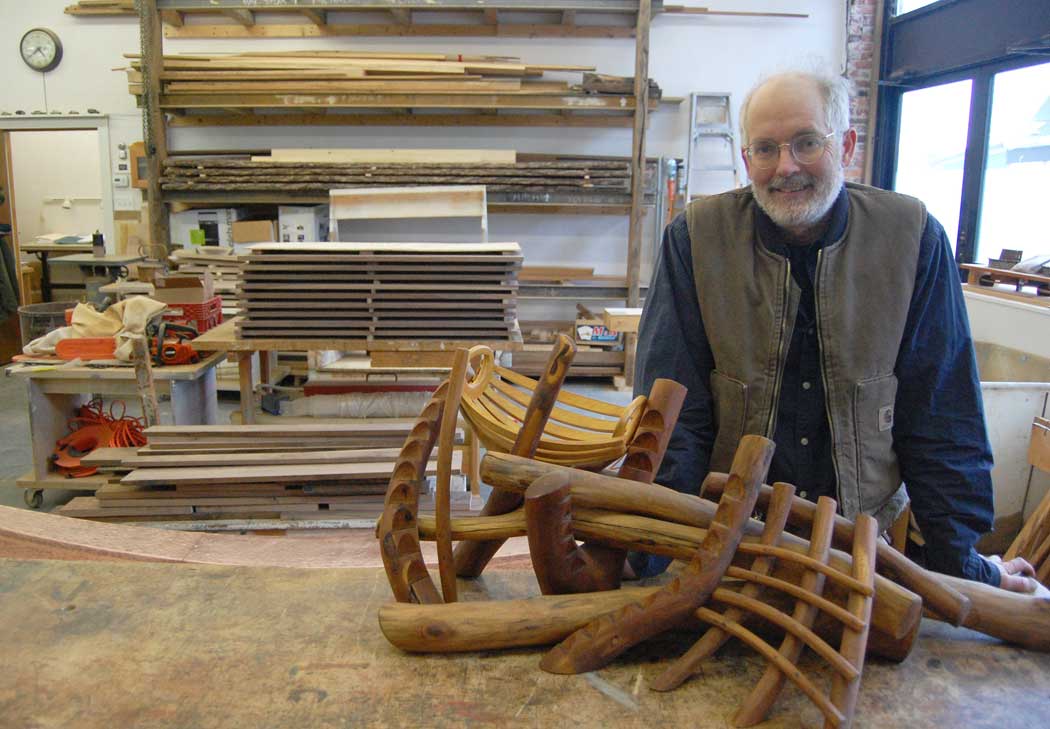
Ryerson, who teaches furniture design at Massachusetts College of Art and Design in Boston, comes out of the studio furniture movement. He trained as a boat builder and built wooden vessels in Maine for a few years, before returning to his native Cambridge in the 1970s to build boats and furniture. He then studied wooden furniture design at Boston University’s artisanry program from 1978 to ’82. He's constructed tables, chairs and dressers as part of the New Hamburger Cabinet Works in Cambridge until 1990, then Powderhouse Woodworkers in Medford until last summer, when he moved into his current shop on Franklin Street in Boston's Allston neighborhood.
Since the mid-1990s, he’s made public seating, beginning with tree stumps that he carved into chairs in Cambridge. He has made benches for Fresh Pond Reservation in Cambridge and Forest Hills Cemetery in Boston’s Jamaica Plain neighborhood, as well as Andover, Newton and Philadelphia.
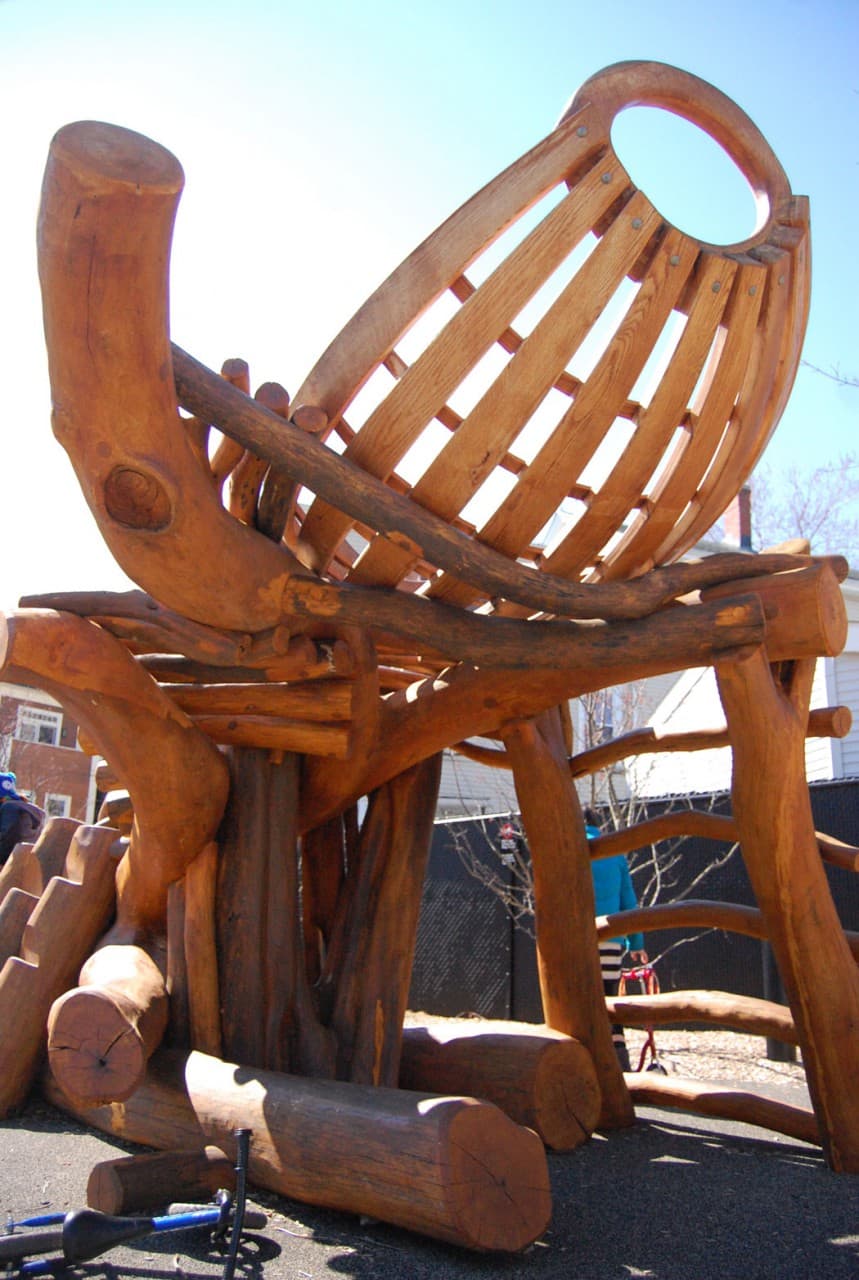
Since branching out into play structures with the Kemp Playground, Ryerson has designed and constructed a musical playhouse for the Beacon Hill Nursery School in Boston and a bench and an array of logs jutting out of the ground for climbing at Boston’s Esplanade Playspace. He transformed a dead tree into a wooden awning, topped with wooden birds, over a bench at the Stoneman Playground on the Boston Esplanade. Last summer, he worked on two Cambridge parks, constructing a 30-foot-long log climber (pictured above and at top), that can look sort of like a row boat washed atop a bent tree, at Alberico Park and an arched bridge over a long sandbox, a cantilevered swinging bench, a winding fence and wooden shed at Fulmore Park.
One signature of the new innovation in playground design has often been an embrace of more adventure and challenge, but also more apparent risk than American public parks have flirted with for a generation. At times this has been controversial—wooden blocks that had been initially part of the Kemp Playground were removed after children were injured riding them like sleds down one of the artificial hills.
Playgrounds will likely never be completely injury free. “I worry about that a lot and try to make them safer. But I also try to make them interesting,” Ryerson says. “You want it to be something that kids feel excited by so they want to work hard and get tired and be active.”
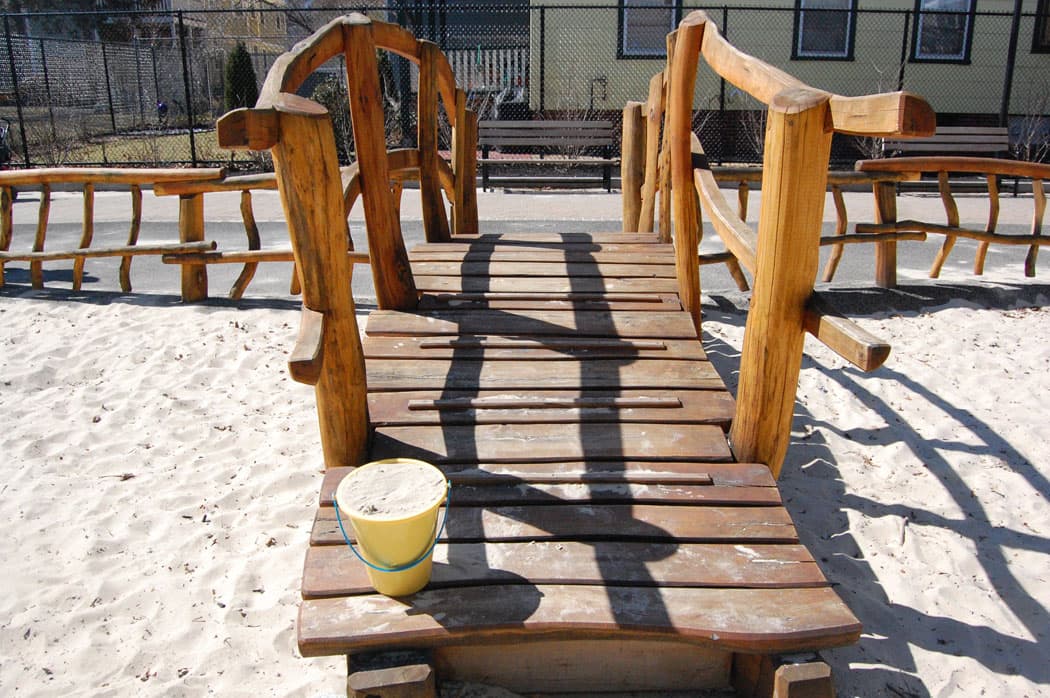
He’s planning to again hire on additional help this summer to develop a wooden climber at Fisher Hill Reservoir Park in Brookline and a “sensory garden” along the Charles River in Watertown.
“There’s a real interest in exposing children to natural sensory experiences that they don’t normally get in the city,” Ryerson says.
He likes to work in black locust wood that he sources from western Massachusetts. “It grows in really interesting shapes, so it’s good for sculptural arrangements,” Ryerson says. “And it’s extremely durable.” He and his crew transform the logs with chainsaws, power planes, electric grinders, chisels, mallets, drawknives, adzes, axes and hatchets. The logs become smooth like driftwood but retain a raw, rustic look.
“I like the natural shapes of the wood” Ryerson says. “I like these forks a lot, the bends, the twists. The really unusual idiosyncratic pieces of wood are really interesting. And I think it gets people to notice wood and trees more and see what they can become.”
Related: At New Somerville Playground, A Quiet Revolution In Play Design.
Greg Cook is co-founder of WBUR’s ARTery. Follow him on Twitter @AestheticResear. Friend him on Facebook.




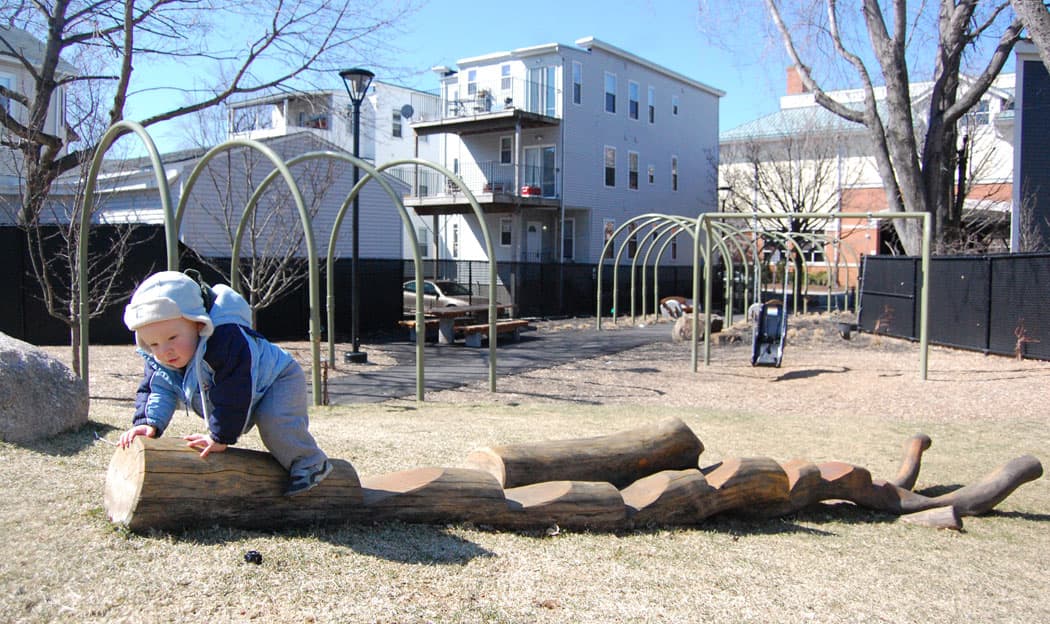

This article was originally published on April 07, 2014.
